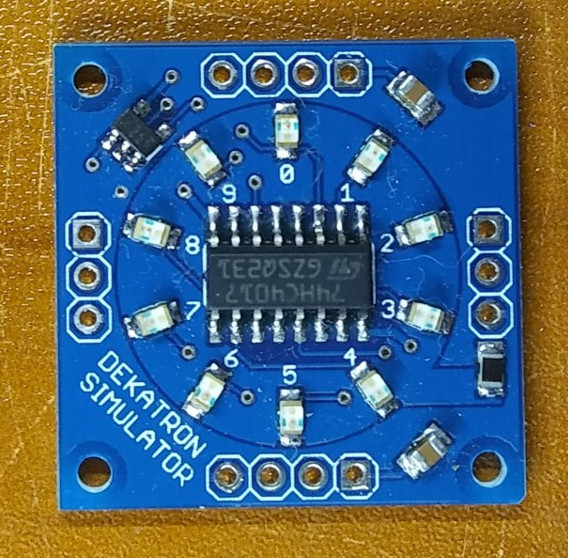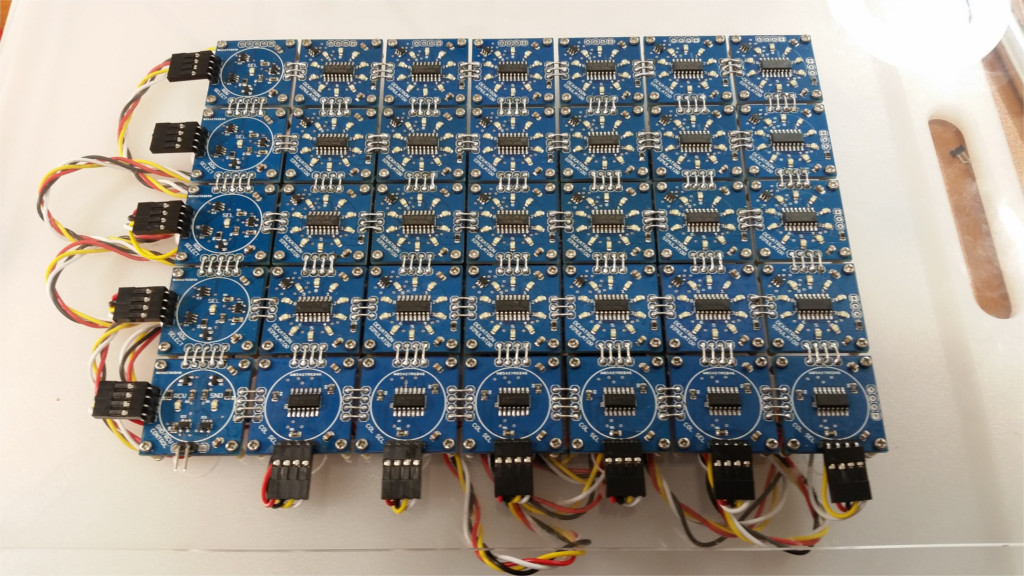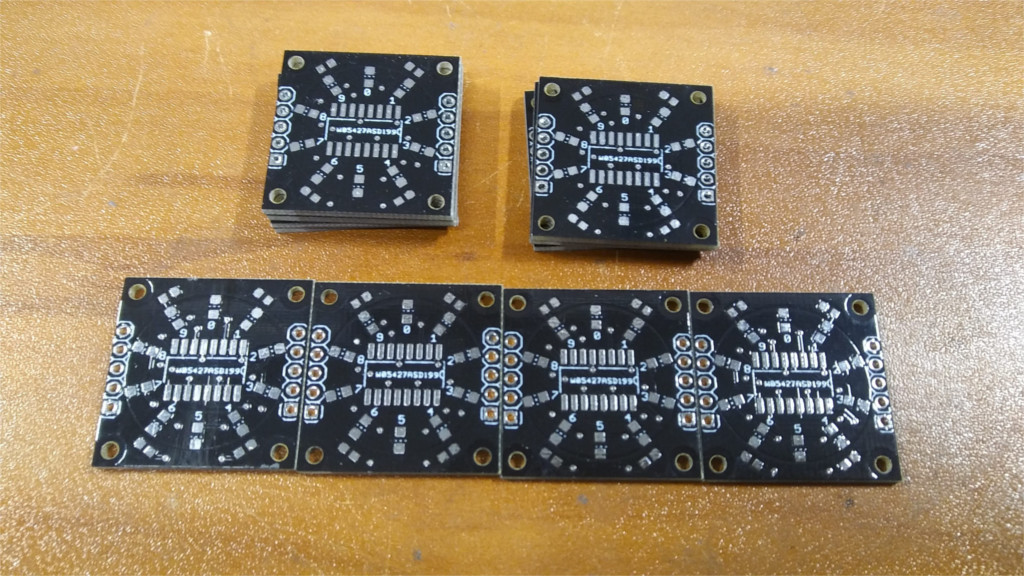A miniature functional analogue of the decatron for the replica Harwell Dekatron Computer and not only
- Transfer
- Tutorial

Developing this functional analogue of the decatron, the author pursued two goals: to participate in the same competition of designs on one-square-inch boards, and also to use many such modules in the WITCH-E project to recreate Harwell Dekatron Computer , also known as WITCH (Wolverhampton Instrument for Teaching Computing from Harwell) on modern components. But you can collect on such "decatrons" and simpler schemes.
The 74HC4017 chip used in the device, as its name implies, is similar in purpose to 4017B (K561IE8), but differs from it in increased speed and a narrower range of supply voltages (2 - 6 V). In addition to it, 10 LEDs of size 0805, 2 resistors of 470 Ohms of size 0603 and two capacitors of 100 nF of the same size are required. The module interacts with external circuits using two groups of five pads in each, four lines on which - VCC, ENABLE, RESET and GND - are duplicated. The CLK-OUT line is displayed on the remaining site of one group, the other is CLK-IN. Thus, you can get a multi-digit decimal counter by docking several modules and applying pulses to the one on the right. Power and common wire can be connected from either side. The pads can be soldered to the terminals for installation in a breadboard (breadboard), as on KDPV, or connectors for assembling multi-digit counters without soldering. The circuit itself is the same as in many other functional analogues of the decatron:

Files (under CC-BY-NC 4.0): scheme in PDF , archive with the project in EAGLE , archive with "gerberas" .
At first, the author wanted to use rather bulky modules in the WITCH-E project, consisting of a 74HC160 counter, a 74HC4511 decoder, eight resistors and a seven-segment indicator.

But they turned out to be uncomfortable and completely unlike decatrons, which, as you know, look like this (but what kind of device is shown there):
Therefore, the author designed three versions of the boards on the 74HC4017 with LEDs arranged in a circle. The first LEDs and microcircuit are located on different sides of the board:

Here is a three-digit counter on such modules that counts the pulses coming from the generator:
Turning the boards over when assembling them in large quantities was inconvenient, therefore, in the second version, the microcircuit and the LEDs are located on the same side.

This is a fragment of the future WITCH-E computer on the second option boards along with the row and column selection boards:

Finally, the author combined the contact pads for external circuits in two groups instead of four, while simultaneously reducing the total number of pads. This is the third version of the board:

it turned out to be compact enough to fit into the requirements of the "square-inch" competition. And soldering thin conductors directly to the terminals of the microcircuit, you can reduce the conversion factor without changing the topology of the board, which is necessary when using such modules in hours.
